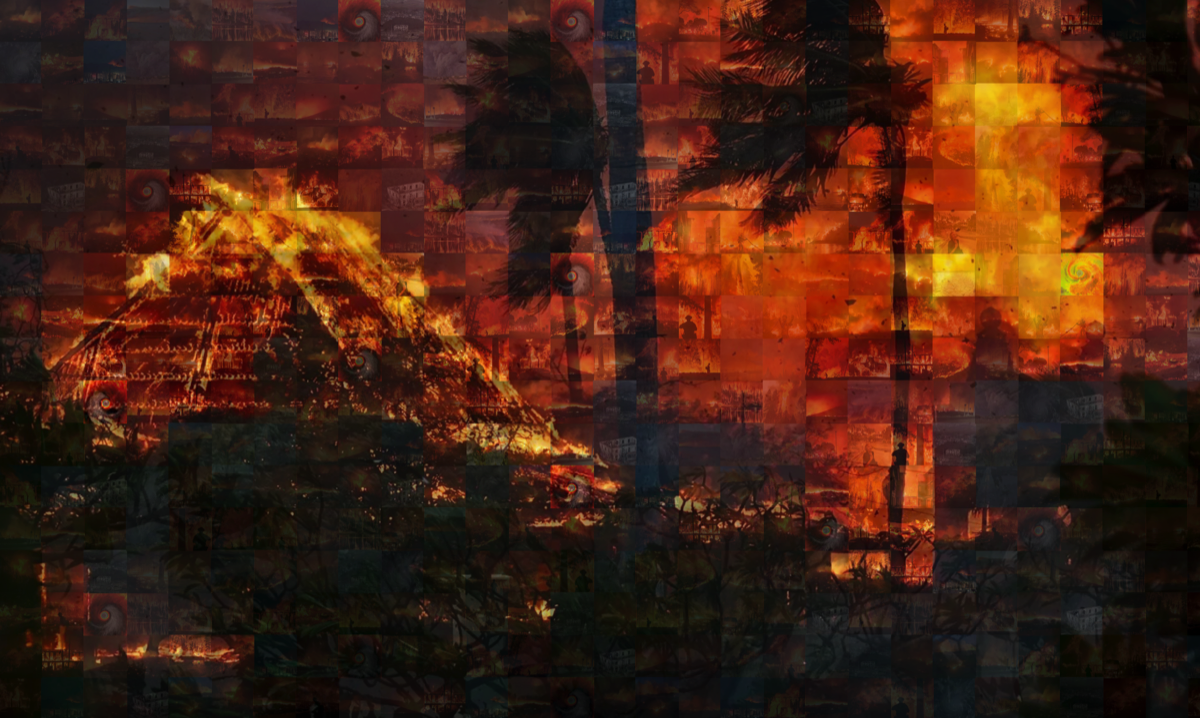
'There is No Way Home': Lāhainā in Ashes and the World on Fire
The name Lāhainā, in the old pronunciation, literally means “the cruel sun.” It was long known as a place where the sun burned fiercely, and situated on the leeward coast of West Maui, it was also a place known for droughts. Strong winds were frequent. As the normal trade winds come over Kahālāwai, the West Maui Mountains, they are funneled down through the Kauaʻula Valley toward Lāhainā, sometimes blowing strong as gale-force winds. It turns out that the name of the valley, Kauaʻula, means “the red rain,” because of the red color of the earth there, which would be carried by the winds to rain on Lāhainā. The historic Waiola Church, first completed in 1832 on the site of the first Christian mission established in the islands in 1823, was damaged by Kauaʻula winds in 1858, destroyed by fire in 1894, by fire again in 1947, and then destroyed yet again by the Kauaʻula winds in 1951. An old epithet for Lāhainā, kukui ʻaʻā mau pio ʻole i ke Kauaʻula, means “the ever-burning torch not darkened by the Kauaʻula gales.”
As the sun rose over the islands that fateful day, a category 4 hurricane was churning across the waters several hundred miles to the south. Nobody suspected the storm would end up causing the worst disaster in the history of the State of Hawaiʻi. Starting the day before, there were high wind warnings throughout the State as the hurricane winds pulled the trade winds down into gale-force winds across the island chain. On Maui, those winds reached hurricane force. The winds were not directly from the hurricane, it must be emphasized, which would have brought a lot of rain; instead, they were dry trade winds whipped up into hurricane force by the passing storm. The first fire broke out just a little after midnight on the 8th of August, not in Lahaina, to use to the familiar contemporary pronunciation, but in the community of Kula, situated on the upcountry slopes of the leeward side of Haleakalā, the “house of the sun,” the much larger volcano that along with Kahālāwai make up the island of Maui.
It was just shortly after sunrise, around 6:30 AM, when fires first broke out on the mauka, or mountain, side of Lahaina. As the sun climbed in the sky to the east, firefighters battled the flames, and it seemed by 9:30 AM that they had extinguished the fires threatening the town. Thus, for the next several hours, as the sun reached its high point in the sky, most of the firefighting efforts were directed to upslope Haleakalā, about a two-hour drive from Lahaina. It is easy to understand why there was no mass evacuation of the town as the day progressed. With power out and much of the communication broken down, the last message received by people in Lahaina from county officials was to “shelter in place.” Who would have thought of packing the family into a car and driving out in hurricane-force winds?
Then about 3:30 in the afternoon, as the sun was now blazing down on the leeward side of the island, fires broke out once more in the outskirts of Lahaina. The red rain that then blew into Lahaina from the winds out of the valley now took the form of fiery embers. The fire blew through the town at astonishing speed. In a couple of hours, the fire had already reached Front Street along the coast and the whole town was ablaze. By 7:00 PM, Lahaina was a burning torch lighting up the sky and a huge menacing black plume of smoke was blowing out to sea obscuring the setting sun.
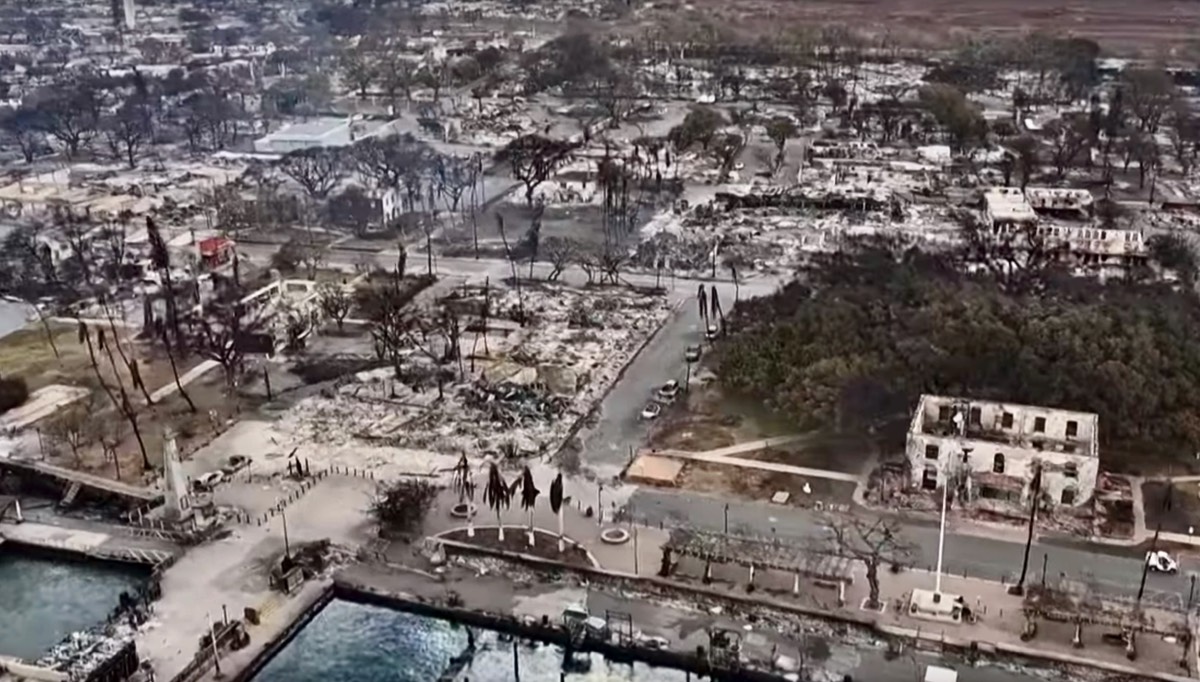
In the morning the extent of the devastation became clear. Just about the whole of the historic town of Lahaina had burnt to the ground. All the old buildings from the early 19th century when Lahaina was the capital city of the kingdom of Hawaiʻi, all the shops, restaurants, and art galleries along Front Street, all of the homes in the heart of Lahaina, all were in ashes. It was also clear early on that there were many who were not able to escape the flames. At last count now a month after the fire, 115 individuals are confirmed to have perished and almost 400 remain missing. By this time, it had become clear that most of the missing would never be recovered as there was nothing left but ashes.
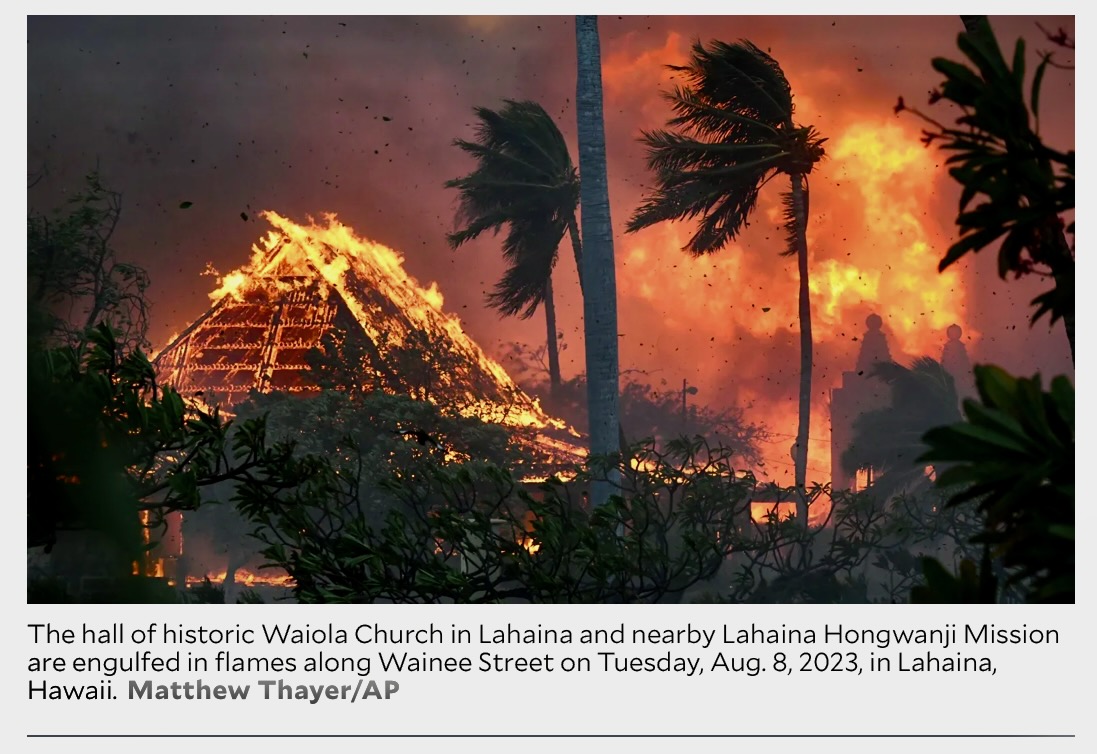
The building in the foreground of this now iconic photograph of the Lahaina fire was misidentified as the historic Waiola Church in many of the media outlets in which it appeared. It was not the church, which had been rebuilt after being destroyed by Kauaʻula winds in 1951, and which stood about 40 feet away, but the Pūnana Leo O Lahaina building. The ‘Aha Pūnana Leo is an organization of Hawaiian language preschools around the islands. The burning building in the photo was a kindergarten. Most heartbreaking of all in this terrible story is the news that many of those who perished in the flames were children.
On the nightly news I heard a reporter refer to the disaster as “America’s Pompeii,” and perhaps there may be some reasons why the comparison is apt. Yes, Lahaina was a coastal city like Pompeii; and was destroyed by a fire that rained down from above, but now, even though authorities are calling it the “deadliest natural disaster in Hawaii since it became a state,” there are many reasons why it was not a natural disaster like the eruption of Vesuvius that destroyed ancient Pompeii.
Some are rightly calling attention to the long history of land mismanagement in the islands, ever since 19th-century settlers “forcibly shifted the land away from indigenous resource management practices and towards large-scale agriculture.” Another old Hawaiian epithet for Lāhainā is “the breadfruit-sheltered land of Lele.” Lele was an ancient name for Lahaina, and back in those times, the place was surrounded by a forest of breadfruit trees. Above the breadfruit, there were vast forests of koa and ʻiliahi (Hawaiian sandalwood). All these forests were eventually cut down for profit and replaced with invasive grasses for cattle grazing, and then later with pineapple and sugarcane plantations. When the plantations left Hawaiʻi in the early 1990s, the land was left fallow, and soon Lahaina was surrounded by fields of thick fire-prone grasses.
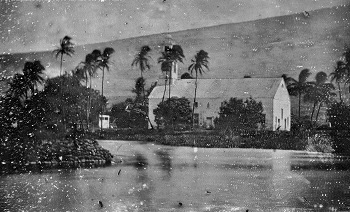
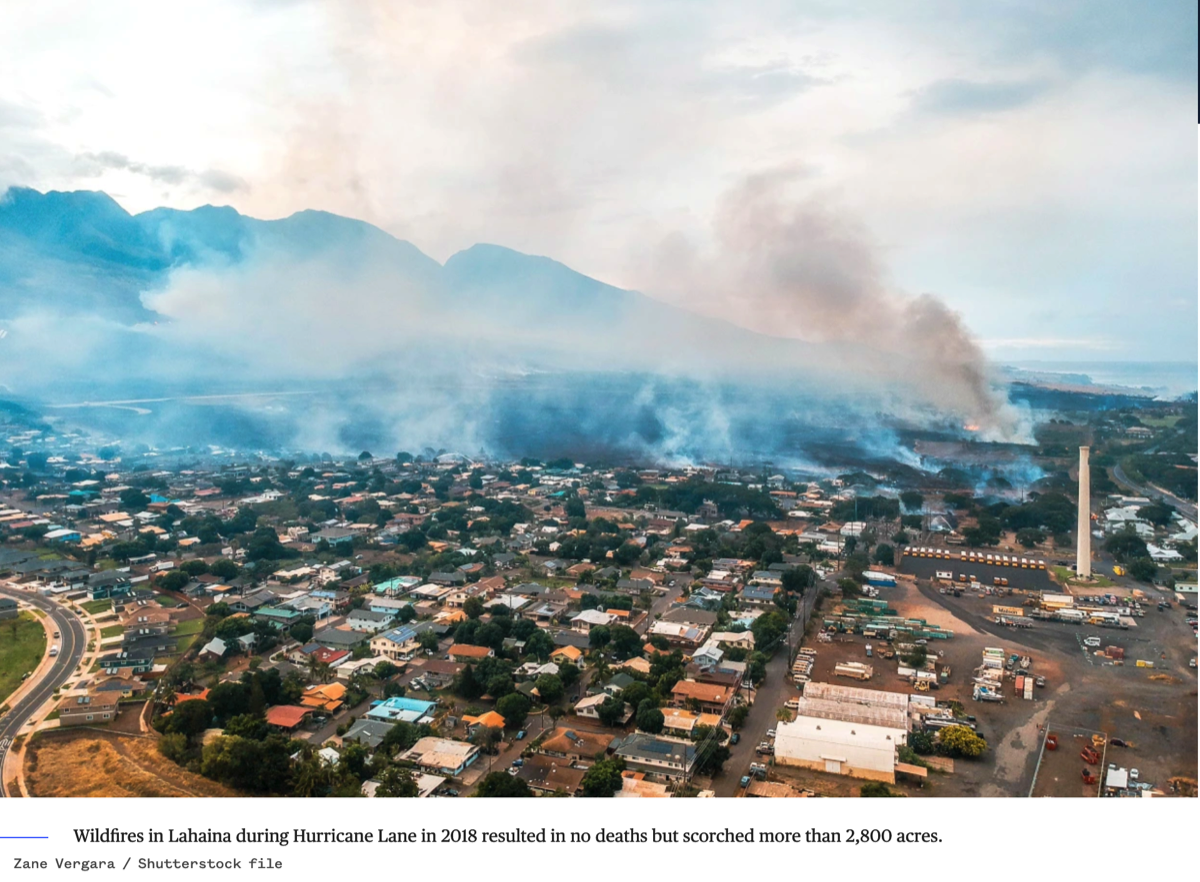
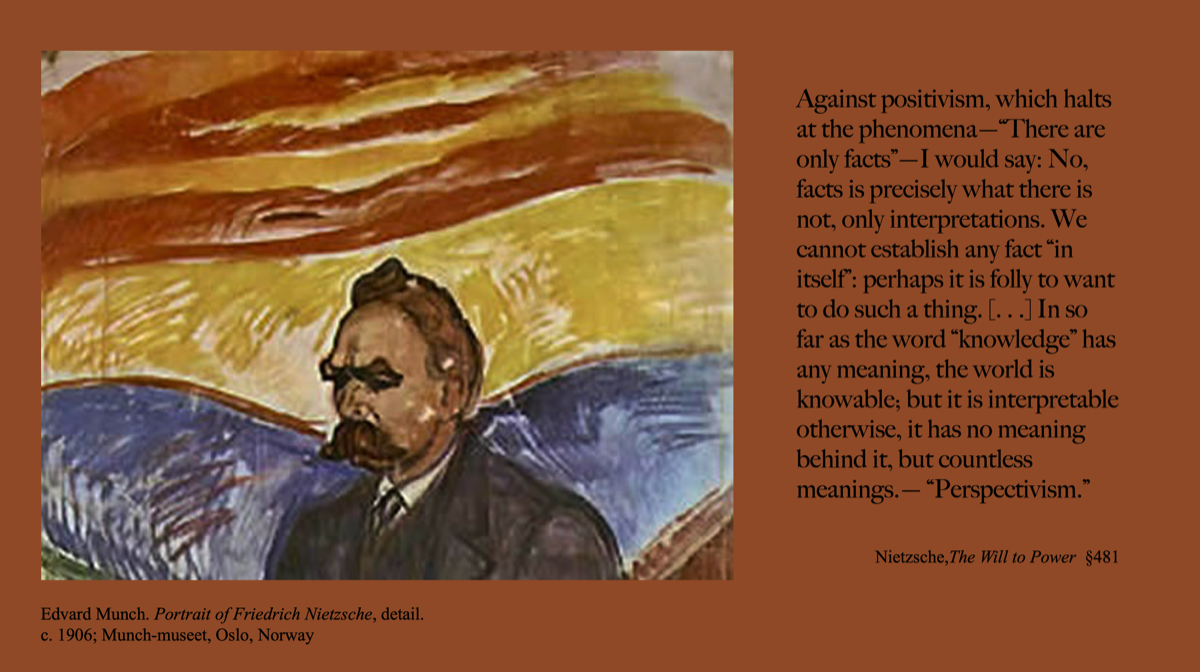
In the published writings, Nietzsche develops this “perspectivism,” his distinctive view that the philosopher is necessarily an artist since all knowing involves some interpretation, some active contribution by the knower. In The Joyous Science, Nietzsche addresses realists, challenging the naive notion that knowledge involves only passive contemplation:
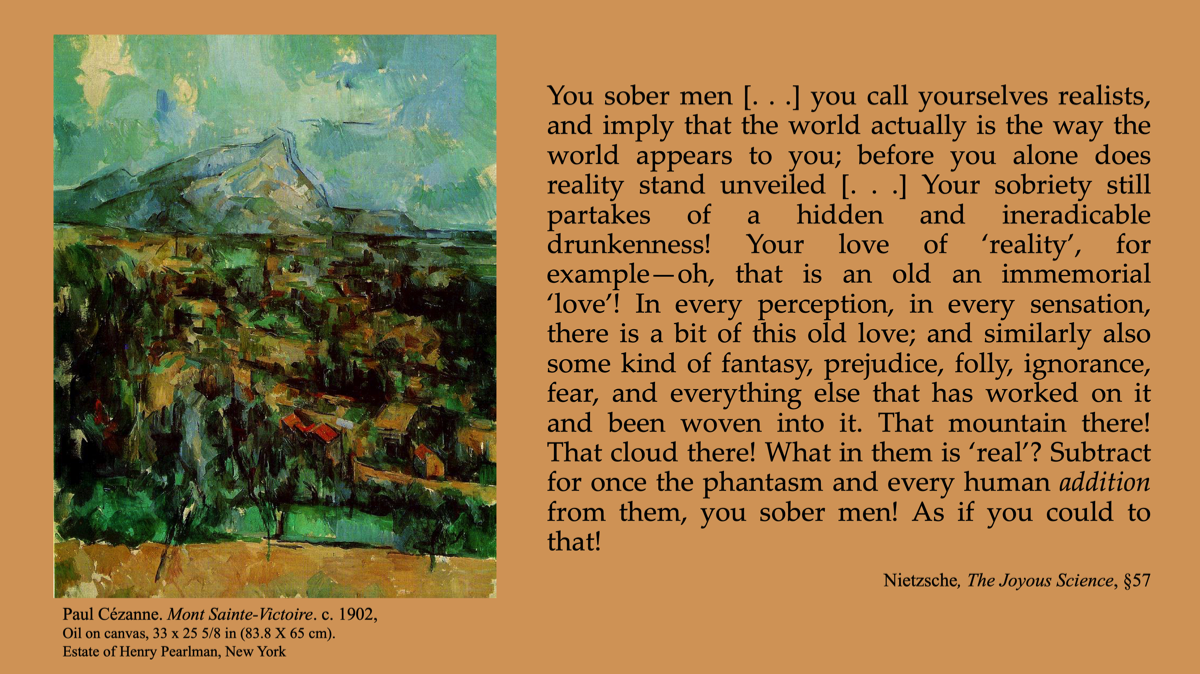
Whereas Plato consigns artists to the dreamworld while philosophers have the serious task of waking up from the dream to the truth of reality, Nietzsche suggests the notion of lucid dreaming for philosophers:
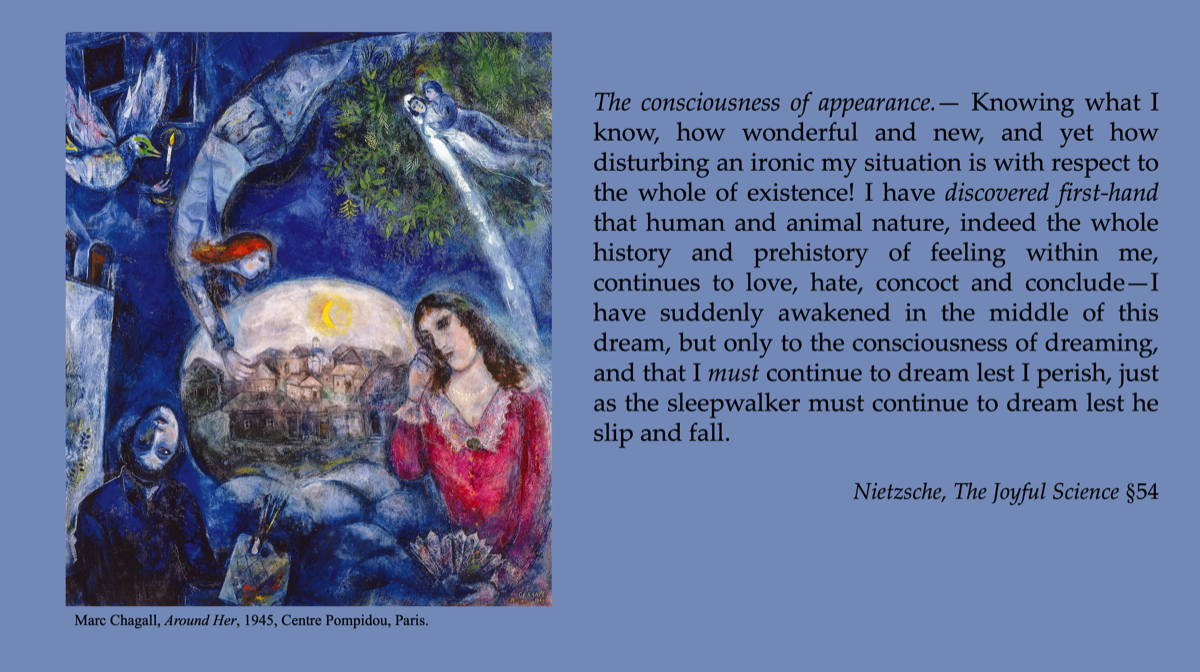
In Beyond Good and Evil, Nietzsche draws an analogy from painting for the philosopher:
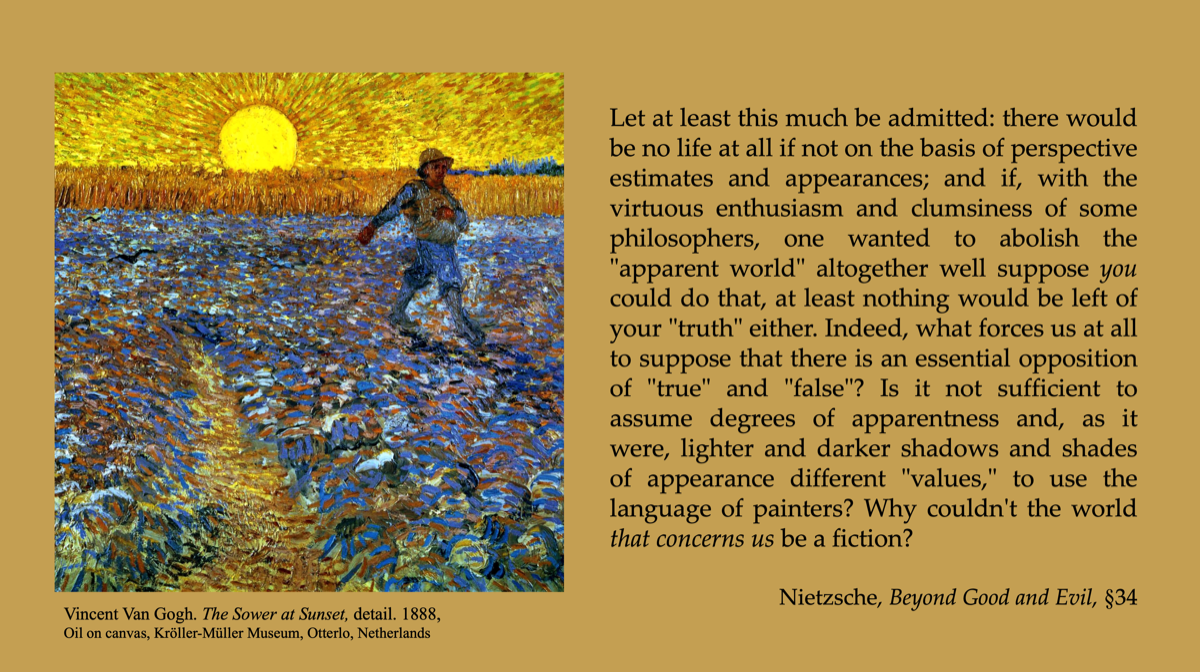
Environmental philosophers have often found Nietzsche’s perspectivism and conception of the philosopher as artist to be incompatible with an ecologically sound philosophy. In defending Nietzsche’s relevance for environmental philosophy, Graham Parkes has long contended that there are passages where Nietzsche seems to withdraw from his “customary perspectivism.” Whereas I want to emphasize the modesty of Nietzsche’s thought in accepting that the world that concerns us is a fiction, in a recent exchange with Parkes, he argued that this is so only most of the time. Parkes thinks that Nietzsche sometimes sounds like a Daoist sage or Zen master in suggesting an experience of “seeing things as they are” in which one is confronted with nature itself, stripped of human projections.
I don’t think that “seeing things as they are” in Nietzsche, Daoism, or Zen means revealing a naked truth, transcending perspectivism, and acquiring knowledge of a “thing-in-itself.” I suspect that in Zen it means no more than the Daoist acceptance of our circumstance or fate (ming 命) which is celebrated in those memorable passages from the Zhuangzi. As Shunryū Suzuki puts it in Zen Mind, Beginner’s Mind, “We should accept things just as they are. This is how we understand everything, and how we live in the world.”
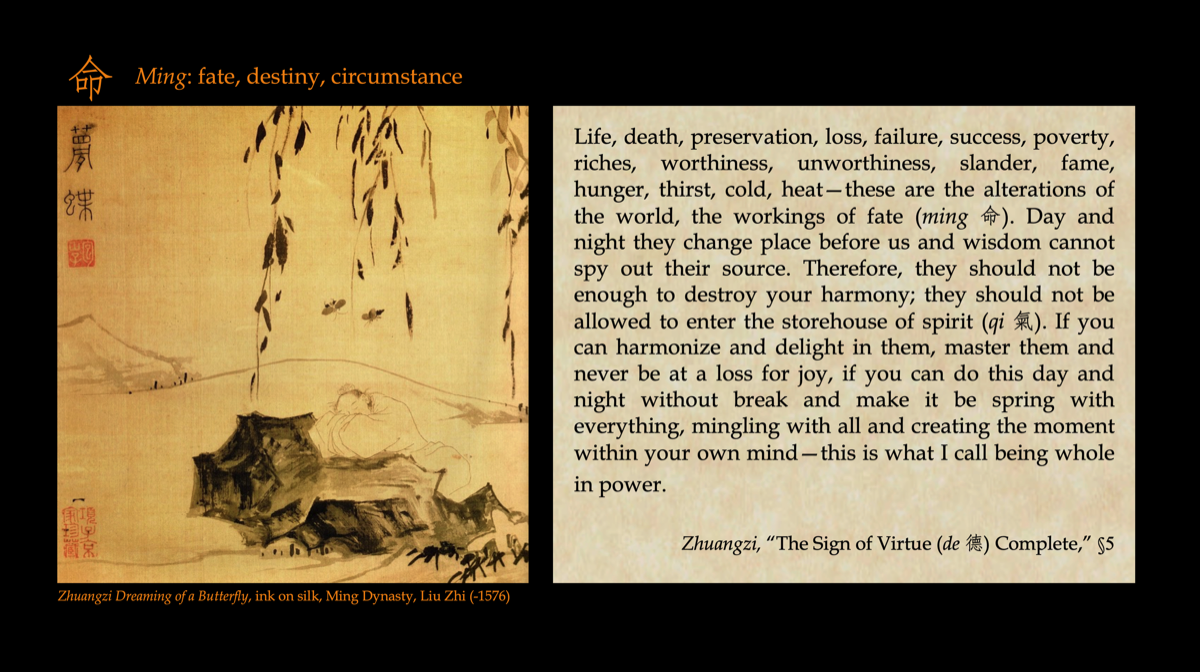
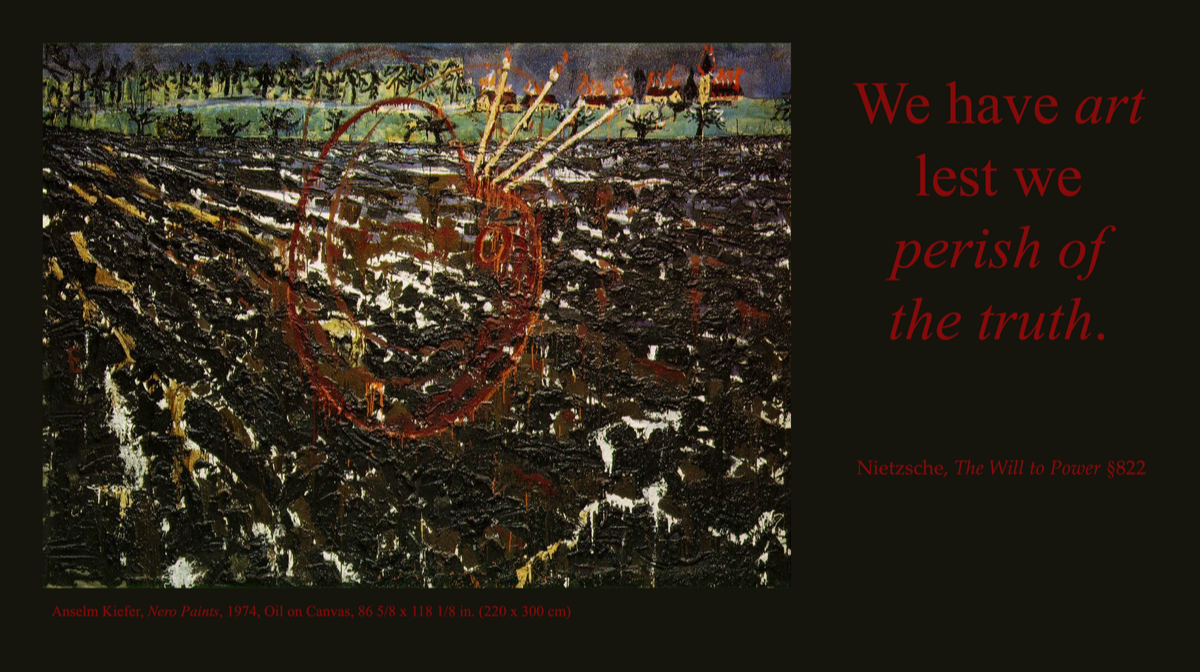
The key to Nietzsche’s thought, following Taminaux’s suggestion, would lie in thinking through how this line echoes that double movement, the shimmering shining, first sketched out in The Birth of Tragedy, involving both the shining forth of Apollonian illusions that are necessary to make life bearable and the Dionysian courage to tear through the veils and face terrible truths.
If the world that concerns us is a fiction, a work of art, that doesn’t mean we should rest content with our beautiful illusions. Truth and falsity, Nietzsche suggests, should no longer be thought in terms of the opposition of white and black, but rather in shades of grey. On one end of the spectrum, there are truths based on high probabilities and a preponderance of evidence, while on the other there are preposterous speculations without any evidence. When Nietzsche suggests that the world that concerns us is a fiction, I don’t think he is encouraging denialism, but rather trying to get us to examine our perspectives and take responsibility for our valuations. I suspect that today Nietzsche would be sounding the alarm about climate change and excoriating those who claim it is a hoax.
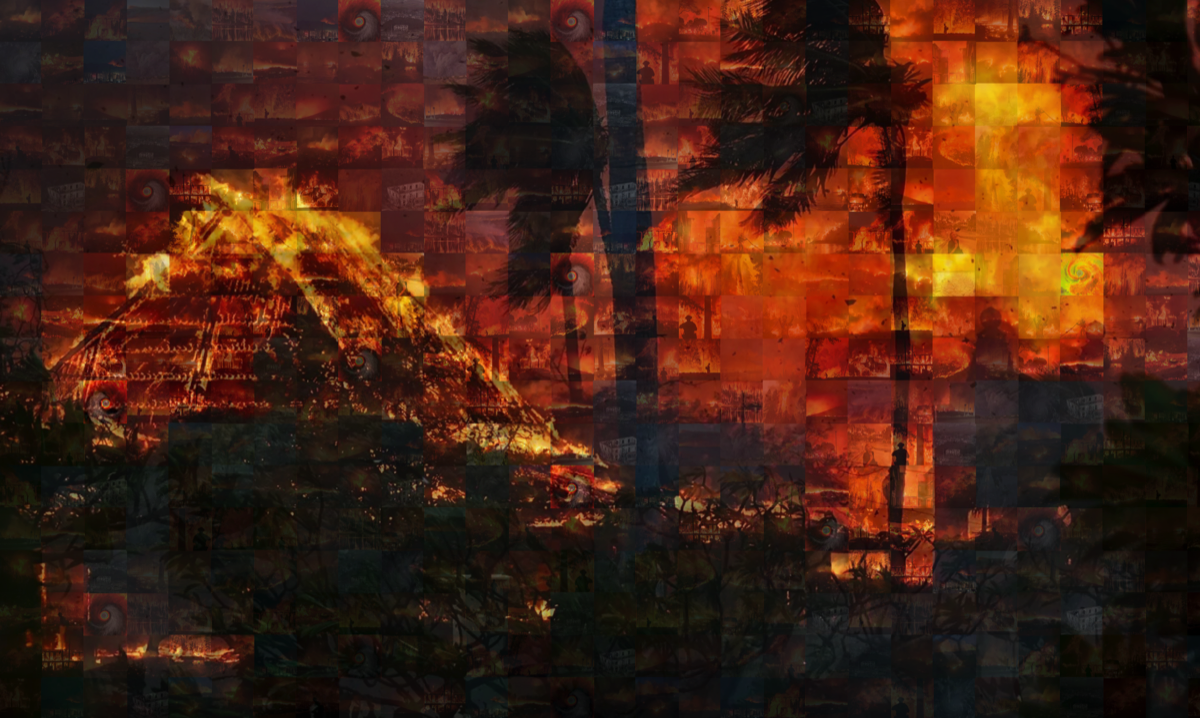
All around the world, we are seeing the consequences of climate change in the storms, floods, and fires that scientists have been warning about. Just this year, in the months before Lahaina, there have been devastating fires across the globe. It seems the whole world is on fire, and the evidence is very strong that this dramatic increase in catastrophic fires across the globe is due to global warming, and that this increase in the earth’s temperature is due to the burning of fossil fuels. What is this evidence? Since the late 19th century, there has been enough data from instruments on the land and the oceans around the world, and from satellites since 1979, to provide reliable measurements of average global temperature. The average global temperature is definitely rising. From ice core samples taken from the two-mile-thick sheet of ice covering Antarctica, there is a record going back 800,000 years that shows the close correlation between average global temperature and carbon dioxide levels in the atmosphere. The graph that shows this correlation also makes it abundantly clear that this is not due to natural causes, but rather the burning of fossil fuels that powers our modern civilization.
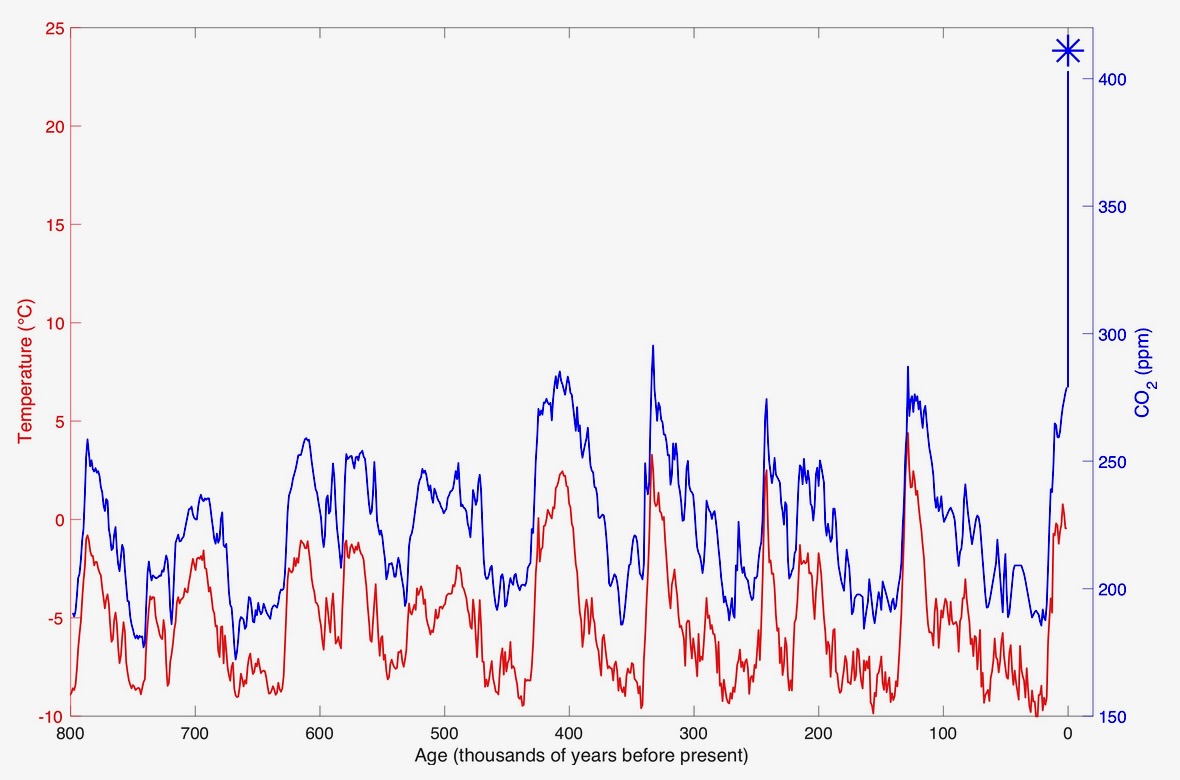
I remember being absolutely shocked when I first saw a graph such as this many years ago which shows that close correlation between average global temperature and the CO2 concentration in the atmosphere. There is a natural oscillation between hot-house conditions and ice ages throughout this long period of the earth’s history that is the result of a natural fluctuation in CO2 levels. Every time CO2 goes up the average global temperature rises. The startling thing, which is still so hard to grasp, is that CO2 levels are now so far off-scale above the record over this time period. What happens when global temperature catches up with current CO2 levels? Do we have the courage to face this terrible truth? One should notice that there doesn’t seem to be much lag time between the increase in CO2 and average global temperature. The graph suggests that the rise in temperature is going to be dramatic. The rise in current CO2 level is not a gradual incline. It is a sharp, abrupt vertical line, like a seismometer line triggered by a great earthquake. This seems to suggest that the fires that are now happening with increasing frequency are going to sweep across the world with the astonishing speed of the fire that left Lahaina in ashes. The sirens should be sounding as we are in a global climate emergency.
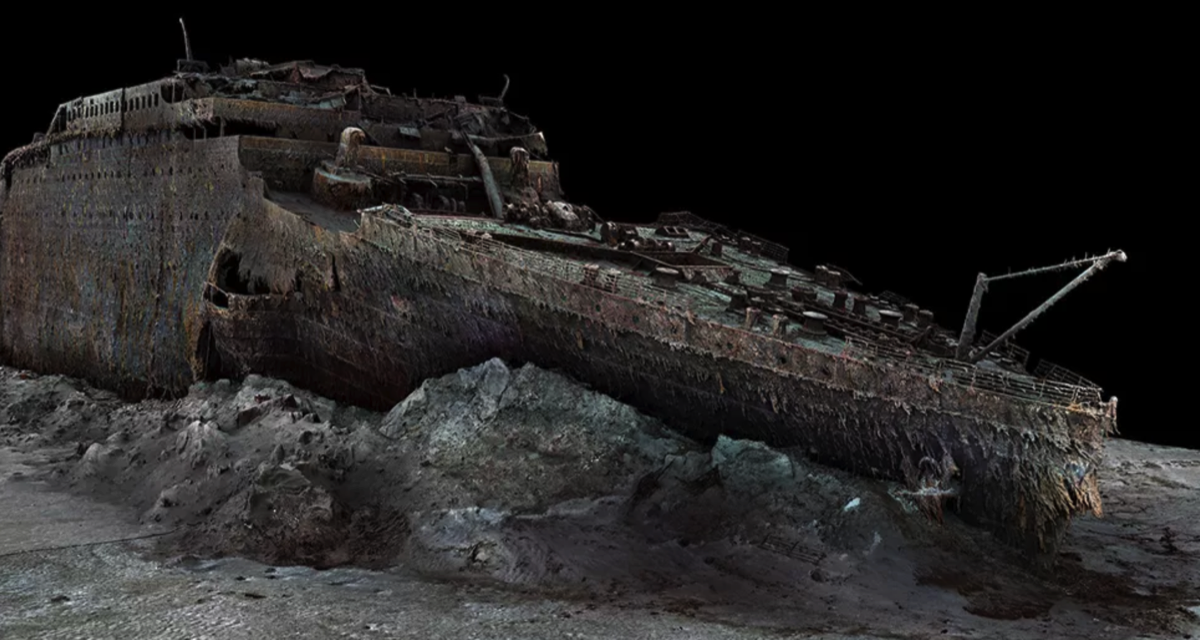
Thompson is the famed navigator of the Hōkūleʻa, the replica built in Hawaiʻi of an ancient Polynesian voyaging canoe. If there is any hope for the future of humanity on this earth, I don’t think it lies in the further advance of technology, but rather in a change of values. We have to find some way to get off Titanic and onboard Hōkūleʻa.
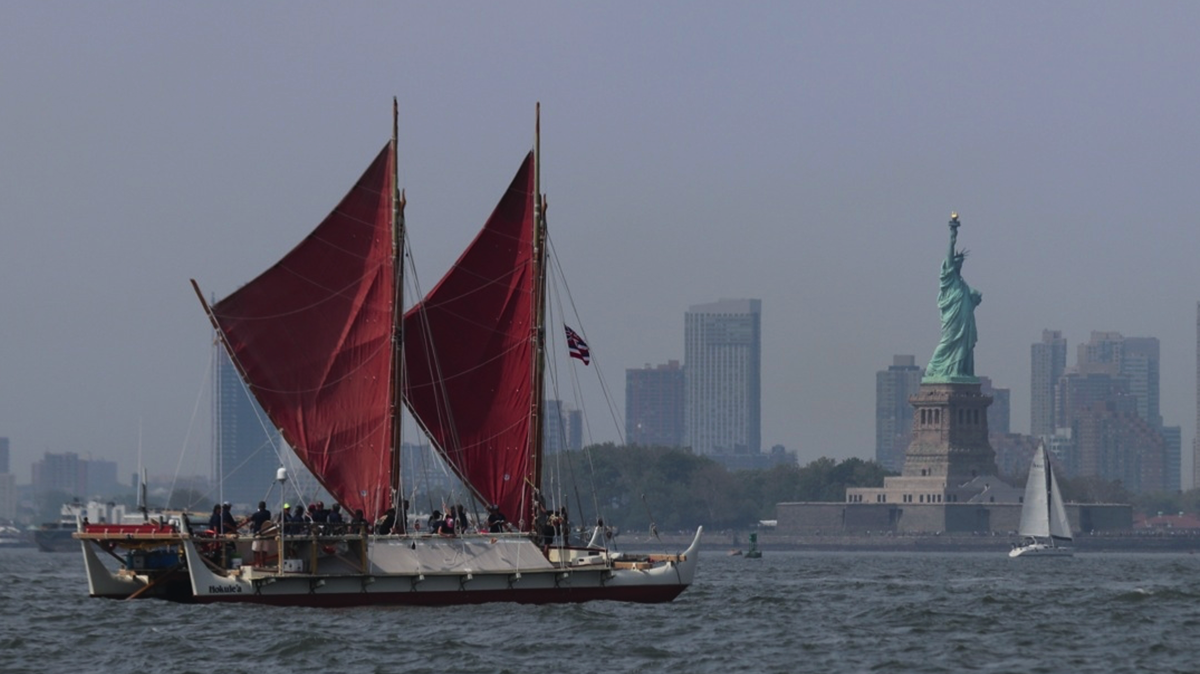
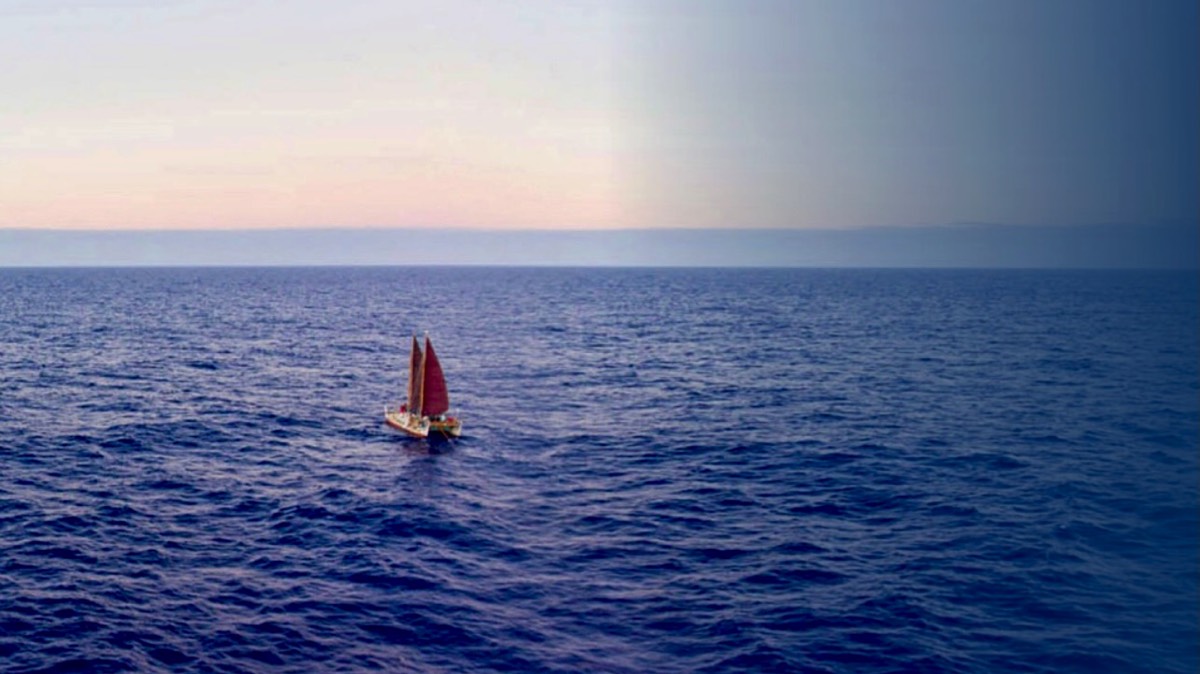
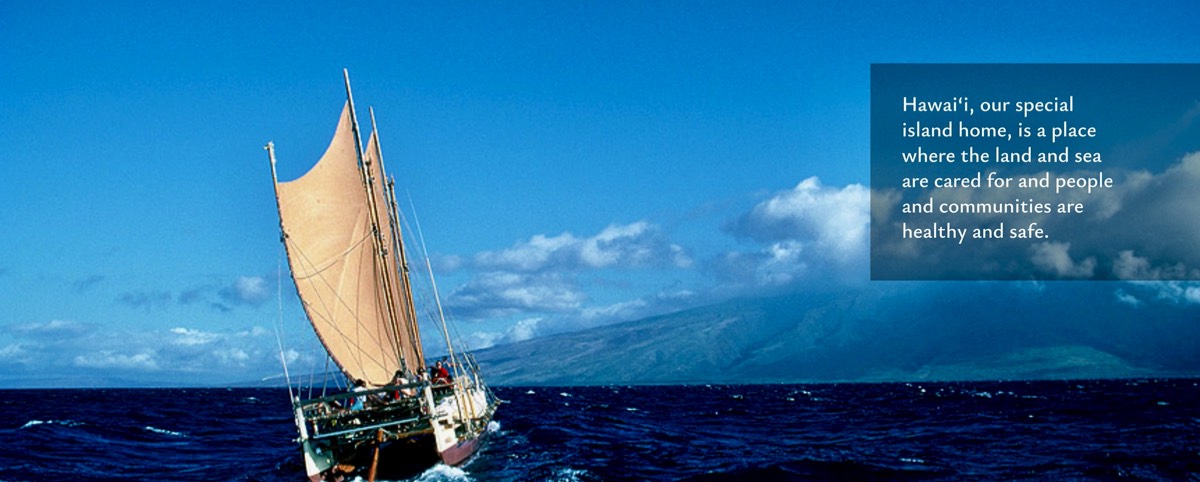
On the other hand, maybe the image tells a different story. Seeing Hōkūleʻa bound for Lahaina opens a vision for the future. If Lāhainā rises from the ashes, perhaps it can be a model for a way of dwelling upon the earth based on the understanding of the earth as our precious home. If we are to find our way home, however, we must first hear the warning sirens that was that fire which turned Lahaina into the blazing torch lighting up that dark August night.
